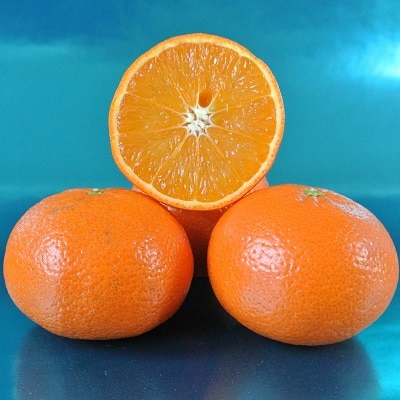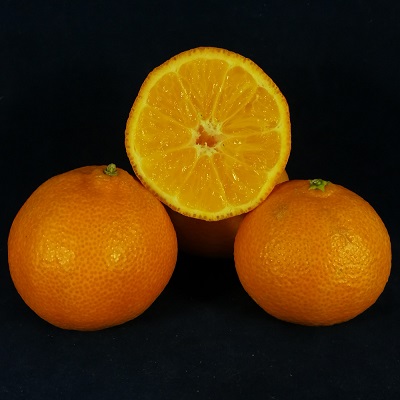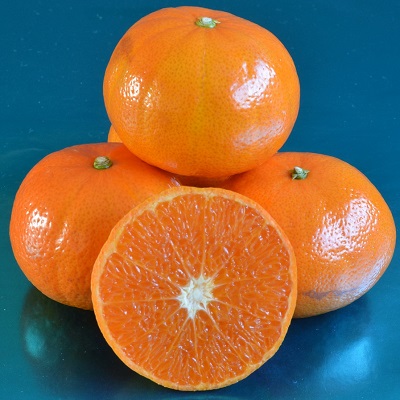The Ortanique is a late-season tangor mandarin which tends to appear on our shelves when the main Clementine varieties are all but finished. It is a fabulous looking, conical-shaped fruit, with a thin but leathery rind with adheres rather tightly and is tough to peel. The skin is a lovely bright yellow-orange colour and is usually very clean and smooth. The flesh is very juicy with a distinctive and rich flavour due to its long hanging on the tree. The Ortanique is usually very sweet with a strong balance of acidity.
Ortanique will often be sold as a ‘value’ option in supermarkets.
Good Fruit Guide Rating: **
The tough peel of Ortanique will be off-putting to customers seeking an easy-peeler, though the eating quality is very good, and will appeal to people who enjoy a slight acidity.
Tough peeling, sweet, tangy.
Names: Ortanique; Mandor; Tambor; Topaz; Urunique. The name Ortanique is a portmanteau word of Or(-ange), tan(-gerine), (un-)ique.
Origin: A Tangor is a cross or hybrid of a tangerine and an orange. The Ortanique is a natural hybrid discovered in Jamaica and first produced in 1920.
Grown in: Spain, Cyprus (Mandor), Israel (Topaz); Uruguay (Urunique), South Africa (Tambor), Jamaica.
Harvest & Availability: Supplies of Ortanique to the UK tend to come from:
- January:
- February:
- March: Spain
- April: Spain
- May: Spain
- June:
- July:
- August: South Africa, Uruguay
- September: South Africa, Uruguay
- October:
- November:
- December:





